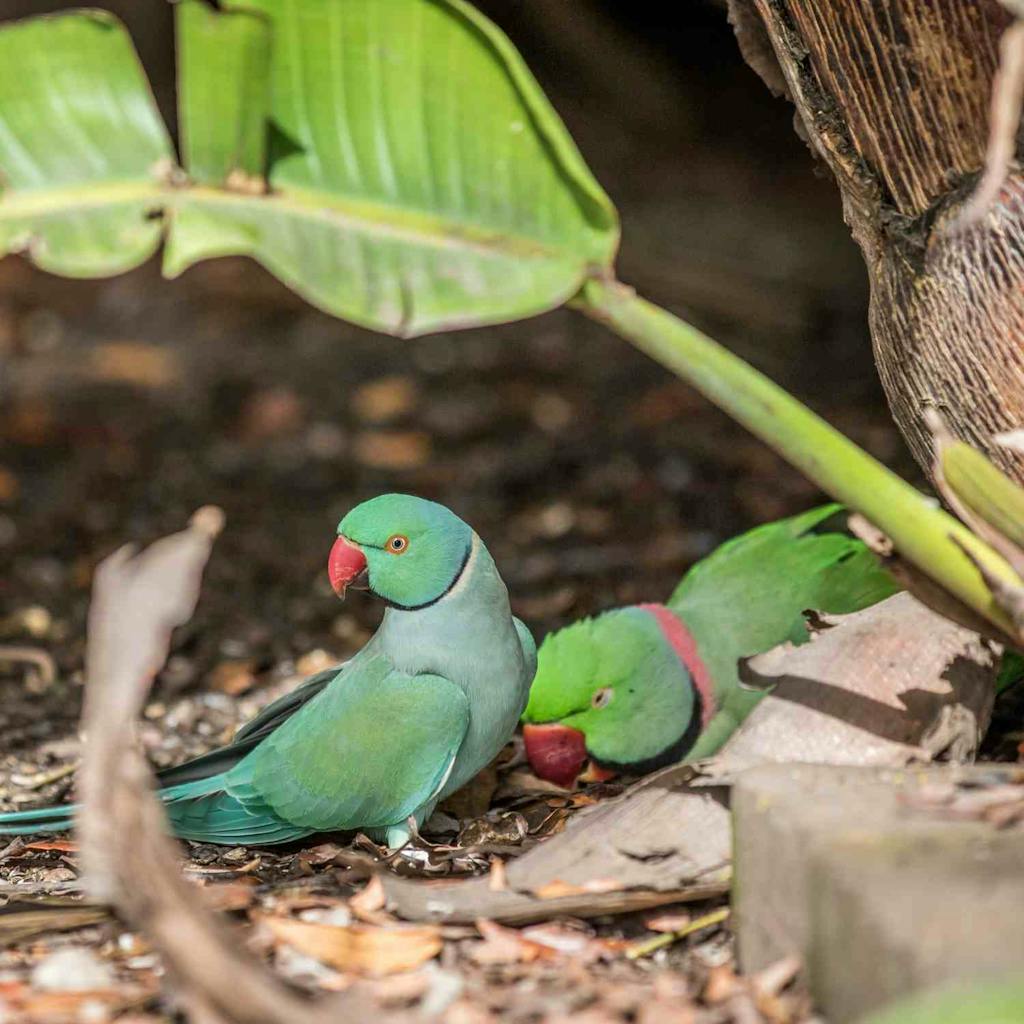Did you know that you can find a wallaby in Hawaii? The non-native animal is elusive but not a threat to Hawaii’s unique ecosystem. And it’s cute! Today we’re learning about the Hawaii wallaby and another “good neighbor,” the parakeet.
An Introduced Species
Invasive species pose a grave, continuing threat to Hawaii’s native flora and fauna. Large amounts of funding have gone towards eradicating species like Coqui frogs, feral swine, fire ants, and mongoose. And after all, we are an invasive species.
But there are at least two unusual, introduced species that have adapted to Hawaii’s environment without a discernible negative impact: the Hawaiian Rock Wallaby and the Rose-Ringed Parakeet. Exotic and elusive, these malahini (transplant) critters can sometimes be spotted by those with a little luck and a sharp eye.
The First Hawaii Wallabies
Wallabies are marsupials, best described as tiny kangaroos. Native to a corner of southeastern Australia, the first wallabies in Hawaii were brought to Oahu in 1916 by Richard H. Trent in a failed effort to create a private zoo.
Wild dogs reportedly killed one of the three original Hawaii wallabies shortly after their arrival. The breeding pair escaped into the wild. Soon after that headline-making incident, Trent donated his collection of exotic animals, bears, monkeys, parrots, and such to the Honolulu Zoo. He also went on to become a trustee of Hawaii’s most revered institutions: Bishop Estate, Kamehameha Schools, and Bishop Museum.
How to See a Wallaby in Hawaii
Recent Wallaby Hawaii sightings have been documented in Kalihi Valley. But anecdotal evidence suggests that the small population has moved into neighboring Nuuanu Valley as well.
Because they are non-native and non-threatening, the Department of Land & Natural Resources does not monitor their population. The Division of Forestry & Wildlife designates wallabies as protected game mammals, so they’re illegal to hunt.
Parakeets in Hawaii

The Wallaby has a friendly neighbor in Hawaii: the parakeet.
I recently learned that a group of parakeets is a “chattering.” This is because one lives in the strand of monkey pod trees below my apartment. It’s an apt word. According to the Bishop Museum, Rose-ringed parakeets were first reported in the wild after escaping a nature park deep in the interior of Manoa Valley. The first sightings date back to 1960. They have since appeared on the Big Island, Maui, and Kauai.
Parkeets are fairly widespread on Oahu, with permanent “chatterings” residing in Nuuanu, Manoa, Kapiolani Park, and a number of other locations throughout the island. They are quite loud in groups, and you’re most likely to see them in the mornings and evenings when they are most active.
These mini-parrots are highly social. They do not mate for life, but they are monogamous. Neon green with a brilliant red beak, they are not hard to find if you are actually looking for them.
Although they sometimes compete for nesting sites with some native bird species, the rose-ringed parakeet appears to have had little, if any, negative impact. Along with the Hawaii rock wallaby, these species have found a way to naturalize in environments not unlike those of their native lands.
Wallaby Hawaii & Parakeets: Good Neighbors
While other introduced, invasive, and alien species have wreaked havoc on Hawaii’s natural environment, the rose-ringed parakeet and Hawaiian rock wallaby have proven themselves good neighbors. Cute, too.




